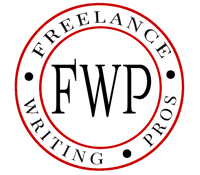
When was the last time you updated your freelance writer website? I don’t mean posting new content to your blog or making some minor SEO or copywriting changes. I’m talking about a real overhaul.
When did you last fully audit the content and copy on your site to make sure it still carries the messages you want to it to? When did you last update your service list based on what prospects are actually asking for? How long has it been since you thoroughly evaluated your site’s analytics, search engine performance, and conversion rates?
An outdated website can be ineffective, damaging to your professional image, and even downright dangerous. But how do you know when one of these things might be true and your freelance writer website could use some TLC?
Here are five signs it’s time to overhaul your professional website.
Your Website Isn’t Attracting Freelance Writing Clients
If your site doesn’t bring in well-qualified leads, and ultimately paying freelance writing gigs, why have it at all?
The bad news? If your professional site isn’t bringing in clients or converting people you send to it, the time you have spent on it was wasted.
The good news? This can be the easiest problem to fix. It doesn’t always require a total overhaul. But if you find yourself in this position, here’s what you can do:
- Review your analytics and see where most of your traffic is coming from, where people are entering your site, and where they’re leaving from.
- Review your site in Google’s search console to review its search engine traffic. What queries are bringing people to your site, and are they relevant?
- If you’re not performing well for relevant keyword phrases, work on your on-site SEO on existing pages and posts.
- Look through every page on your website and find its call-to-action (CTA). If a page doesn’t have one, add one.
- Think about where you’re promoting your site. Make sure its link is in your social media profiles, forum signatures (where allowed), your email signature, or anywhere else you interact with clients and prospects.
These things won’t fix your issues overnight, but they’ll help you plan a roadmap for improving your site without having to rebuild from scratch.
Your Site is Outdated and Reflects Badly on You
Then again, there are times when it is better to rebuild from the ground up. And if your freelance writer website is so outdated that it reflects badly on you professionally, it might be time to do that.
How might your site reflect poorly on you?
- You wrote the copy on your site many years ago and it’s sub-par compared to the standards your clients expect from you today.
- The copy and content on your site simply doesn’t reflect your current writing style if it’s changed over the years.
- Your specialty is in a timely area (like journalism or technology niches), but your samples don’t reflect that anymore.
- You haven’t updated service details or rates on your site when your standard contract terms or what you’re advertising elsewhere have changed.
- Your site’s design is so visibly dated people can’t even be sure you’re still in business (so they leave right away).
If you don’t feel you’re in a good position to evaluate how dated your site is, ask a trusted colleague to take a look. You might also send a short survey to existing clients to see what would make it more useful to them before a redesign. Then work out a plan to rebuild as much, or as little, as you feel you need to.
Your Website Still Isn’t Mobile-Friendly
Mobile devices account for over 48% of internet traffic. That doesn’t mean the same is true for traffic to your own site (mobile traffic makes up only around 10% of visitors to my own professional site for example). But it does mean your site should be mobile-accessible so you aren’t losing potential leads with an unusable site when prospects visit.
There are two basic ways to make your site mobile-friendly:
- You can have a mobile-specific design or mobile-first design.
- You can build your site using a responsive design (or responsive theme if you use WordPress like I do).
In most cases, a responsive design will be your best bet as your mobile site in this case likely won’t be much different than the desktop version. With a responsive design, blocks, modules, or “divs” in your site will shift around when someone views your site on their phone. For example, three service blocks that appear horizontally in a row on your desktop site would display one on top of the other in mobile browsers.
If your current site design, template, or theme still isn’t mobile friendly, you can be sure it’s well out-of-date and due for a major overhaul. That doesn’t only make it difficult for mobile visitors to access your site. It could mean you’re putting those visitors at unnecessary risk.
Years Without Updates Can Lead to Security Risks
This is perhaps the biggest reason an outdated design can mean it’s time for big changes. It’s not just about image and the user experience (UX). It’s also about safety and security.
Let’s say you built your freelance writer website on WordPress years ago. You always ran theme updates regularly. And you figured the developer would stay on top of things, so you didn’t have to worry unless you saw an update notification in your admin area.
Maybe you haven’t seen one of those update notices in a while. Maybe not in a year or more. Your site is still safe, right?
Probably not.
Here’s the thing. Web developers and theme designers often stop supporting older products as they move on to develop newer ones. That’s true both of free and premium designs you might have used.
Even though you aren’t seeing updates, that doesn’t mean they aren’t needed. Your old theme or template could leave you open to more than compatibility issues with newer tech. It could leave you open to known exploits the original dev is no longer monitoring.
If this sounds like you, here’s what you can do:
- If you use a content management system (CMS) like WordPress, look at your current theme and all plugins on your site (even the deactivated ones).
- Delete all deactivated themes and plugins you aren’t using. Everything installed on your server is a door for potential attackers. Back them up and save local copies if you might need them later. Leave the most recent default theme for troubleshooting.
- Check the last update’s release date on every theme and plugin left. Consider deactivating anything not tested with your current core software version. Ideally delete or replace anything that hasn’t been updated at all in over a year.
- Quickly run your domain through Sucuri’s malware scanner to make sure there are no obvious old hacks or defacements to your site. This isn’t enough to be sure you’re in the clear. But it’s a start.
- If you’re on WordPress, install a security plugin like Wordfence, let it run a scan of your site, and check email warnings from them religiously so you never miss updates or other vulnerabilities it finds.
- Start thinking about a major rebuild of your professional site (if your theme is the security risk rather than plugins that can be removed or replaced independently). This can mean a total redesign. Or you might be able to preserve your visual design while moving to a more secure and updated theme on the back-end.
Never delay updates for long. Once an exploit is found, you’ll want to install any updates or patches right away to protect not only your own hard work on the site, but also any potential client who visits it. And please, remember to back up your themes, plugins, and databases regularly so you can restore to the last good version if you ever are hacked.
Your Target Clients or Services Have Changed
Perhaps your site looks modern enough. It’s secure. Its UX is great. It even attracts paying clients. There might still be good reason for an overhaul ( the reason mine is scheduled to undergo one again early in the New Year). Sometimes it’s not an issue with your site. It’s a change with you.
For example, maybe you’ve worked as a freelance blogger in the past and that’s who your site copy targets. But now you want to pursue more print writing gigs.
Or maybe you’re branching out and want to add consulting services to your freelance writing work because you’ve seen a demand for that with past clients.
Or you might want to add new freelance writing services, remove some you don’t enjoy anymore, or tweak the style of a service you’re promoting. For example, you might go from SEO-focused online content to more long-form thought leadership style pieces.
In any of these scenarios, your website could need significant updates. If your branding is changing, that might include the design. Or it might just mean overhauling your copy to better suit your new goals. But it’s not always the appearance of a site that signifies a need for updates. Sometimes it’s about function and your broader business interests.
Take an honest look at your current freelance writer website and evaluate how it’s performing based on your current target clients and goals. If it’s not delivering, work out a plan to overhaul it. And if it is working but you think there’s room for improvement, now is a great time to sort out how you might do that.
